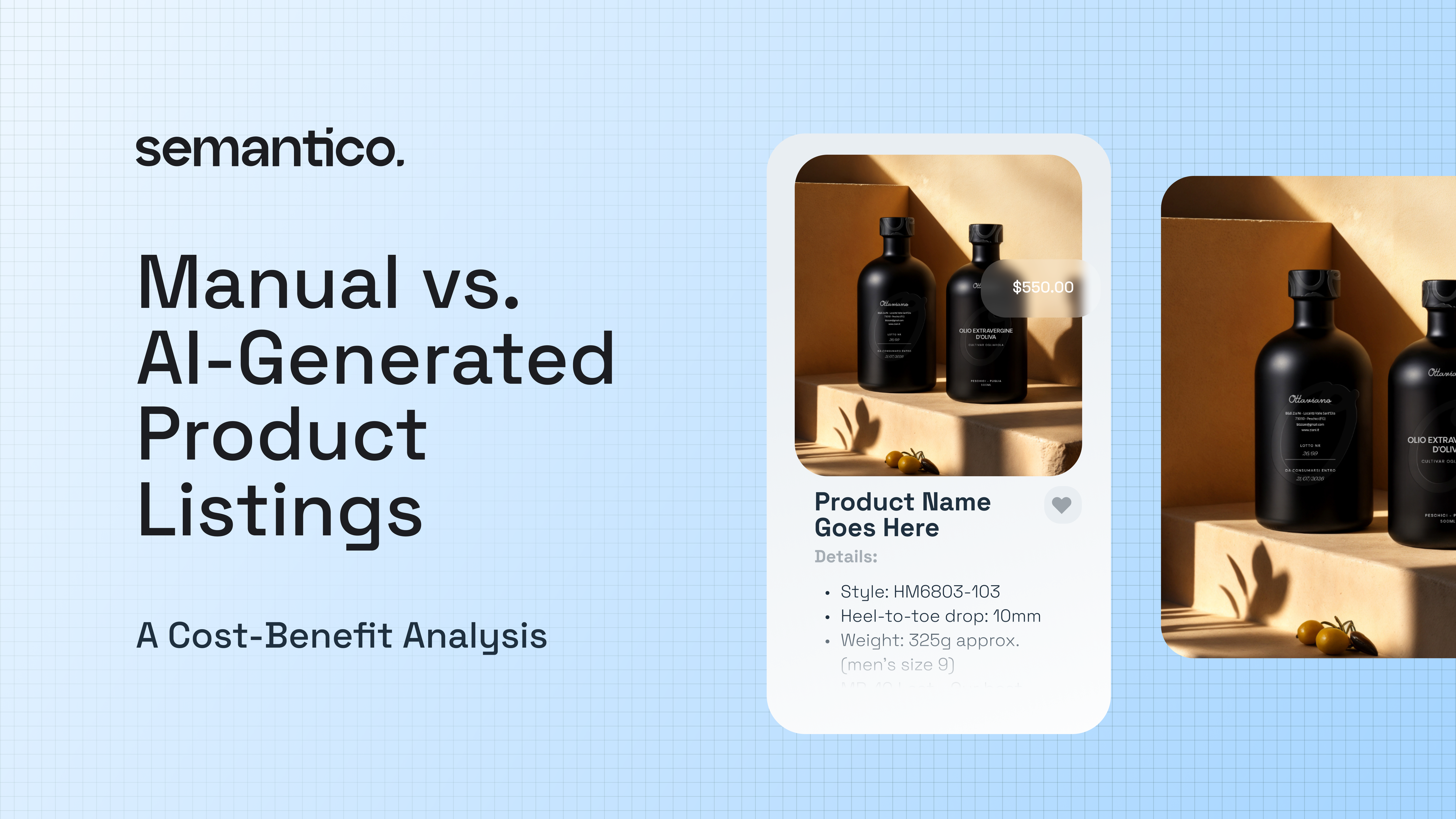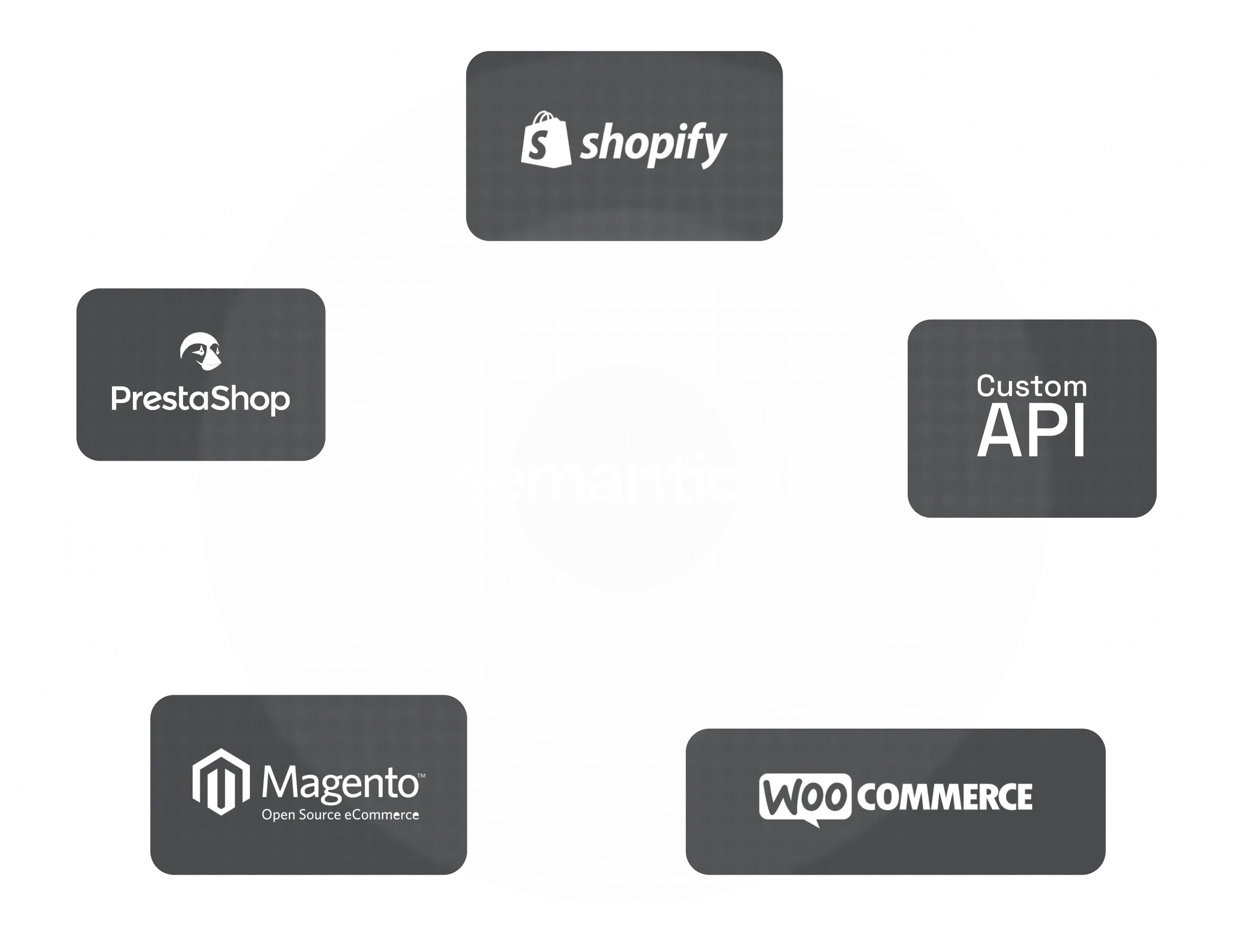E-commerce operators know that creating and managing product listings can become a major operational bottleneck. Every new SKU added manually is time away from strategy and a delay in potential sales. This slow pace and inefficiency is essentially a hidden “Catalog Chaos Tax” on the business – you pay for it in lost sales, launch delays, and inconsistent customer experiences. How big is this tax? Industry research shows companies lose an average of $9.7 million per year due to inaccurate or incomplete product information, and 40% of consumers have returned items because of incorrect details according to Eklipse Creative. Even expanding to new channels is sluggish; nearly 45% of businesses take 6–11 months just to update product data for a new sales channel. In the meantime, customers encounter outdated or inconsistent listings and lose trust – 86% say they won’t shop again with retailers who provide bad data. In short, manual catalog workflows are draining resources and missed revenue is piling up due to this chaos tax of delays and inconsistencies.
The question is: Can automating product listing creation remove that tax? In this post, we’ll compare the traditional manual approach versus AI-generated product listings in terms of time, cost, quality, and scalability. The goal is to give eCommerce managers and catalog teams a clear cost-benefit analysis of switching to product listing automation. By the end, it’ll be evident why modern, AI-driven listing processes (like Semantico’s) aren’t just faster – they’re a smarter investment for growth.
Manual Process Breakdown
What does creating a product listing manually involve? In practice, it’s a labor-intensive, step-by-step slog that typically includes:
- Data collection & entry: Gathering product details (specs, prices, images, etc.) from suppliers or internal teams and copying them into the system or spreadsheet by hand.
- Content writing & formatting: Manually writing product titles and descriptions, then formatting text to meet marketplace or website style guidelines (HTML formatting, bullet points, etc.).
- SEO tuning: Researching and inserting keywords, refining titles and meta tags for each listing so that it’s search-friendly – often done one product at a time.
- Translations & localization: If you sell in multiple regions, translating each product description and ensuring measurements, currencies, etc. are localized correctly, often via separate tools or contractors.
- Publishing & verification: Uploading the listing into the eCommerce platform or PIM, mapping fields correctly, and double-checking that the live page looks right. This might be repeated across multiple marketplaces (Amazon, eBay, etc.) with different formats.
Each of these steps takes significant time and human effort. Errors inevitably creep in – a typo in a spec here, a missing image or size detail there – especially as the catalog scales. Every new SKU or content tweak becomes a tedious task, often done via spreadsheets and copy-paste, which “ate up hours of work and often introduced mistakes” in one real-world case. If a single product listing takes even 10 minutes to prepare, a batch of 8,000 SKUs would consume roughly 1,300 hours of manual work – that’s impossible to sustain under tight launch timelines. And maintaining consistency is a constant struggle; one team might describe or categorize items differently than another, leading to fragmented data and an inconsistent brand presentation across the site. Multilingual catalogs add another layer of complexity – trying to keep product information aligned in English, Spanish, German, etc. via manual processes is nearly impossible without slipping up. No wonder employees can end up spending up to 50% of their time just fixing data errors and chasing down inconsistencies instead of pushing new products live.
In short, the manual listing workflow is slow, error-prone, and costly. It not only delays time-to-market (some teams report weeks or months to roll out new items) but also diverts skilled staff to mind-numbing data entry and cleanup. The manual approach might work for a small catalog, but at scale it becomes a serious growth inhibitor – the “catalog chaos” sets in as your team struggles to keep up with the workload and quality issues.
AI-Generated Workflow Breakdown
Now imagine a different approach: an AI-powered product listing platform that automates the heavy lifting. Semantico’s platform is an example of an AI product listing software designed to handle end-to-end listing creation. Here’s how an AI-generated workflow differs from the manual process:
- Automated content generation: Feed the AI a minimal input (e.g. a SKU or product name and maybe a reference URL), and it will generate a complete, ready-to-publish listing. This includes a structured title, a detailed description, bullet points, and specs within seconds, all formatted to your template and brand voice. No one on your team has to write copy from scratch for each product – the AI writes it for you, consistently and coherently.
- Intelligent categorization & attributes: The AI analyzes the product and assigns the correct category and attributes automatically. It normalizes attribute names/values so that every product follows the same naming conventions and units. All your listings get a uniform structure (no more one product missing a size attribute that another has). Semantico essentially applies a unified taxonomy across your catalog, ensuring each new item is organized just like the rest.
- Image sourcing & enhancement: Instead of manually finding, uploading, and resizing images, the platform can source product images at scale or enhance them. For example, Semantico can attach the relevant images for each SKU or even use AI upscaling to meet your storefront’s standards. This means no product goes live without a picture, and your team isn’t stuck in Photoshop or chasing vendors for photos.
- Instant translations: AI handles localization on the fly. Semantico can translate product titles, descriptions, and attributes into multiple languages in a natural way that preserves your brand tone. Five languages or more are no problem – the translations come out consistent and ready to use in each region, without the slow back-and-forth of human translators for each SKU.
- SEO optimization built-in: Because the AI is generating the content, it can also bake in SEO best practices (keywords, meta descriptions, structured data) for every listing. This means from day one, each product page is search-engine friendly without a marketer having to manually tweak it. All listings follow the same SEO formula, improving your overall discoverability.
- One-click publishing: Perhaps one of the biggest efficiency gains – once the AI has generated and you’ve reviewed the listings, you can publish in one click. Semantico exports all the product data in the proper format for your eCommerce platform or marketplaces. No tedious CSV uploads, no copy-pasting into multiple channel dashboards. In seconds, your new listings go live across your sales channels.
In an AI-driven workflow, what used to take weeks can now happen in minutes. The platform acts like a tireless assistant that “handles all the routine listing tasks end-to-end”. Your team’s role shifts from manually assembling content to simply reviewing and approving the AI’s output. The result is a dramatic increase in speed and consistency: you get complete, enriched product pages with titles, descriptions, images, specs, and translations all done in one go. Every listing adheres to the same quality bar and format guidelines by design. It’s like moving from crafting each product page by hand to running an assembly line that never makes a mistake. Importantly, the brand voice and accuracy stay under control – you set the rules and the AI follows them, so the tone and data are consistent across thousands of items. By automating listing creation, you eliminate the busywork and free your team to focus on higher-value activities (like strategy, merchandising, or creative improvements) rather than copy-paste chores.
Cost-Benefit Comparison: Manual vs. AI Listing
Let’s directly compare the costs and benefits of manual vs. AI-generated product listings across a few key dimensions.
- Time to Publish: Manual workflows often mean long lead times to get products live. Creating content, translating, and proofreading can stretch the process to weeks before a new SKU is customer-ready. Many retailers simply can’t list items as fast as they source them, resulting in stock sitting idle. AI flips this equation – product listings can be generated and published in minutes or hours, not weeks. Tasks that might take a content team days to finish can be done in 15–30 minutes with modern automation tools. Faster listings mean faster time-to-market, so you start selling (and profiting) sooner rather than later.
- Human Resource Cost: Manually listing products is labor-intensive. You either pay internal staff for hundreds of hours of catalog work or outsource to copywriters/agencies that charge per listing. Those costs add up quickly – traditional content creation can cost $0.50 to $5.00 per listing in labor when you factor in writing, editing, and coordination. For a catalog of thousands of SKUs, that’s a hefty expense. AI-driven listing creation drastically lowers the unit cost. Businesses have reported cutting the per-listing cost down to mere cents (under $0.02 in some cases) by automating the process. For example, after Semantico, Logiscenter was able to slash catalog management costs by 90%. Essentially, you can do more listings with fewer people. Instead of needing a larger team as you scale, automation lets a small team manage a huge catalog without burning out or blowing up the budget.
- Data Quality & SEO Consistency: With manual creation, quality can be hit or miss. Different team members write with different styles; some listings end up with incomplete specs or inconsistent formatting. It’s common to see variations in how information is presented, and critical SEO elements (like meta tags or keyword usage) might be overlooked on some products. These inconsistencies hurt customer trust and SEO performance. By contrast, AI-generated listings follow a standardized template and rules every time. That means every product page gets the full set of data (no missing fields), a consistent tone, and SEO-friendly structure built in. The AI doesn’t get tired or forget steps – 100% of your listings can have clean titles, descriptions, structured attributes, and proper keywords on the first day they go live. This level of consistency is extremely hard to achieve with a purely manual process. In short, quality scales with quantity when using AI: you maintain (or even improve) content quality as you add more products, rather than quality slipping through the cracks.
- Scalability: Perhaps the biggest narrative in manual vs. AI is scalability. Manual processes do not scale gracefully – if you double the number of SKUs, you likely need to double your content staff or accept much longer timelines. There’s a linear (sometimes exponential) increase in effort. In fact, surveys found 45% of companies needed over 6 months to roll out product data to a new channel, and 21% needed over a year. That’s how bottlenecked traditional methods can get. AI-driven listing is built for scale. The automation doesn’t care if it’s generating 100 listings or 10,000 listings – it can handle volume with minimal human oversight. Teams have managed thousands of products across dozens of platforms with the same resources that used to handle only a few hundred. Need to add an entire new product line of 5,000 SKUs? With AI, it might be a week-long project for one person, not a year-long project for a whole department. Scaling up (or expanding to new marketplaces and languages) no longer requires hiring an army of product content specialists. In essence, AI gives your catalog an almost unlimited capacity to grow without the traditional growing pains in time and headcount.
Real-World Impact
The theoretical benefits of automated product listings sound great, but do they hold up in reality? Two real case studies from Semantico’s clients illustrate just how transformative AI-generated listings can be:
- Logiscenter (B2B electronics distributor): This company was drowning in spreadsheet-driven catalog updates and struggling with inconsistent product data. After implementing Semantico’s AI platform, their listing operations underwent a complete turnaround. Product listings now go up 10× faster than before, meaning tasks that once took days are done in hours. This speed to market helped drive a 30% increase in search-driven traffic, as more products and better SEO content made the site far more discoverable. At the same time, Logiscenter reduced catalog management costs by about 90% by automating what used to be manual labor. In short, they’re doing 10 times the work at a fraction of the cost, and seeing more organic traffic (and presumably sales) as a result. The qualitative improvements were huge as well – the product data became consistent and error-free across thousands of listings, freeing the team from constant fire-fighting. Logiscenter’s small eCommerce team can now scale the catalog without scaling costs or errors, turning their once-cumbersome process into a competitive advantage.
- Spanish Pharmacy Retailer: In another scenario, a Spanish online pharmacy (with a lean team) needed to launch a new pet products category fast. Traditionally this would require a whole team and months of work to manually create thousands of rich listings. Instead, using Semantico’s AI, a single person managed to list over 8,000 SKUs in one week. All those products went live with complete descriptions, images, categories, and even translations for each item. In fact, the platform generated 50,000+ translated texts across five languages so that the new catalog was multilingual on day one. Doing that by hand would have been herculean – but with AI, it was handled automatically. The “one-person, one-week” launch was a stunning proof of scalability: one catalog manager accomplished in days what would normally tie up a whole department for months. This retailer not only saved massive labor costs, but they also didn’t compromise on quality or consistency in the rush. Every listing was on-brand and error-free, and the time per product went from ~10 minutes manually to under 1 minute with AI. It’s a powerful example of how automating product listing creation lets even a small team move at lightning speed and seize new opportunities (like entering a new vertical) without the usual chaos.
These case studies underscore that AI-powered product listing automation isn’t just a theoretical improvement – it delivers tangible results. Faster time-to-market, higher traffic, lower costs, and bulletproof consistency have been achieved in practice. Companies like Logiscenter turned their catalog into a growth engine, and even a modest-sized retailer could instantly scale up their assortment and geographic reach thanks to AI. The upside is not only operational (doing things cheaper and quicker) but also strategic: teams can react to market demands faster, launch new categories or channels with confidence, and provide a better experience to customers with richer product content.
At the end of the day, adopting AI-generated product listings is about more than just speed – it’s about making your catalog operations fundamentally more efficient and effective. Yes, automating listings will save your team countless hours (and eliminate the drudgery of manual data entry), but it also ensures your product content is consistently high-quality and optimized from the start. It’s an investment that pays off in multiple ways: faster launches, more reliable data (leading to fewer returns and customer complaints), and lower overhead. In other words, AI listing tools like Semantico help turn catalog management “from a bottleneck into a multiplier” for your business. When every product page is created and published with near-zero delay and zero mistakes, your team can focus on growth – expanding the catalog, entering new markets, and improving the overall shopping experience – instead of chasing errors and playing catch-up.
The cost-benefit analysis is compelling. The “Catalog Chaos Tax” of manual processes – those hidden costs of lost sales and slow execution – can be effectively eliminated by switching to an AI-powered workflow. It’s not just doing the same work faster; it’s doing it better and at scale. Your pages launch strong (SEO-ready and complete) on day one, your brand voice stays consistent globally, and you can list more products without more headcount. Ultimately, freeing your catalog from manual bottlenecks means more revenue opportunities captured and a higher ROI on your operations.
For eCommerce managers and marketplace operators, the takeaway is clear: AI product listing automation is not just a tech upgrade, it’s a smart business move. It cuts costs, drives up quality, and lets you reclaim time that can be reinvested in strategy and innovation. If you’re still managing listings the old way, consider how much you could save – and earn – by modernizing this workflow. In an ultra-competitive online market, the ability to launch products quickly and flawlessly is a game-changer. It might be time to say goodbye to spreadsheet drudgery and hello to a faster, smarter catalog process.
Semantico’s platform is one solution making this possible – and as we’ve seen, it’s already helping teams launch more, with less effort and better outcomes. The bottom line: AI-generated product listings aren’t just about keeping up with the times; they’re about getting ahead in efficiency, consistency, and ultimately, sales growth. Try Semantico for free today!





